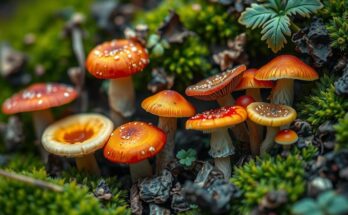The Svalbard Global Seed Vault, or ‘Doomsday Vault,’ safeguards 930,000 seed samples globally, ensuring agricultural biodiversity and security. Established in 2008, it protects against climate change, conflict, and disease. The vault’s strategic location ensures long-term viability, proving vital in instances like the Aleppo gene bank disaster. It underscores the urgency of preserving our agricultural heritage amidst rapid biodiversity loss.
Nestled in the icy mountains of Norway’s Svalbard archipelago lies the Global Seed Vault, commonly known as the “Doomsday Vault.” This facility serves as a safeguard for agriculture, housing approximately 930,000 seed samples from around the world. It acts as a pivotal backup in the event of global agricultural disasters, representing a crucial insurance policy for future generations, as highlighted by LADbible.
The Svalbard Global Seed Vault, operational since 2008, is strategically designed for rare use, only opening six times a year to receive new seed deposits from global gene banks. Its mission is to preserve biodiversity and ensure food security against threats such as climate change, war, and disease. The vault’s location on Spitsbergen Island within the Arctic Circle is ideal for its political stability and natural refrigeration provided by the permafrost.
Bente Naeverdal, the vault’s property manager, notes, “It is away from the places on earth where you have war and terror… It is situated in a safe place.” This remark underscores the facility’s significance in an unstable world, where natural disasters and human conflict pose ongoing risks to agricultural biodiversity.
The efficacy of the Doomsday Vault has been demonstrated in practice, notably in 2015 when it provided replacement samples to a gene bank in Aleppo, Syria, after its destruction due to conflict. Marie Haga, executive director of the Crop Trust, states, “There are big and small doomsdays going on around the world every day,” emphasizing the constant risk of genetic material loss. Alarmingly, agricultural biodiversity is declining quickly, with over 90% of the United States’ fruit and vegetable varieties extinct and only 10% of rice varieties remaining in China since the 1950s.
The vault is designed to withstand natural disasters and conflict while ensuring seed viability for decades, even without power. Extending 430 feet into the mountain, it houses seeds in vacuum-packed silver packets within stacked boxes. Lead partnerships coordinator Brian Lainoff asserts, “Inside this building is 13,000 years of agricultural history,” highlighting the vault’s imperative role in safeguarding the future of global food security.
The Svalbard Global Seed Vault, often referred to as the ‘Doomsday Vault,’ serves as an essential safeguard for global agricultural biodiversity. With a significant collection of seed samples, it provides a critical insurance policy against potential crises, underscoring the importance of preserving genetic diversity for future generations. As threats to agriculture increase, the vault remains a fortress of hope and resilience, capable of protecting our food supply in uncertain times.
Original Source: indiandefencereview.com




